The Art of Street Photography
By capturing a moment that others might never be aware of, street photographers can make us look at the world around us from a new perspective—Luxury Defined meets the best practitioners working today
By capturing a moment that others might never be aware of, street photographers can make us look at the world around us from a new perspective—Luxury Defined meets the best practitioners working today
Yanick Delafoge, also known as Yanidel, was in the Paris Métro one afternoon when he spotted two lovers. “I had a second to lift the camera, compose, and press the shutter,” he recalls of capturing The Republic of Love, a moment of intimacy framed within the doors of a train in a station full of strangers. Some street photographers see themselves as fishermen, finding their perfect setting and composition and patiently waiting for their subject to appear, while others describe their approach as hunting, always on the move, chasing what the pioneer of the genre, Henri Cartier-Bresson, called “the decisive moment”; when all the elements of the image come together in an instant. Yanidel is definitely in that latter category.

“I’m not a very patient person. I keep on moving and react to opportunities as they cross my path. Many of my pictures are taken in a split second and I rarely have time to take more than one or two shots. By experience, the first shot is often the best since it is usually completely intuitive,” says the Swiss photographer, now based in Argentina.
London’s Ronya Galka could also be described as a hunter. “I roam the streets for hours on end in search of moments to capture and memories to make.” Noting that every photographer has their own style and approach in order to stay unnoticed and unobserved, she points out that she likes to “move with the flow of the city. There is life to be observed everywhere, and standing in one place for an extended period feels like I am limiting myself too much.”
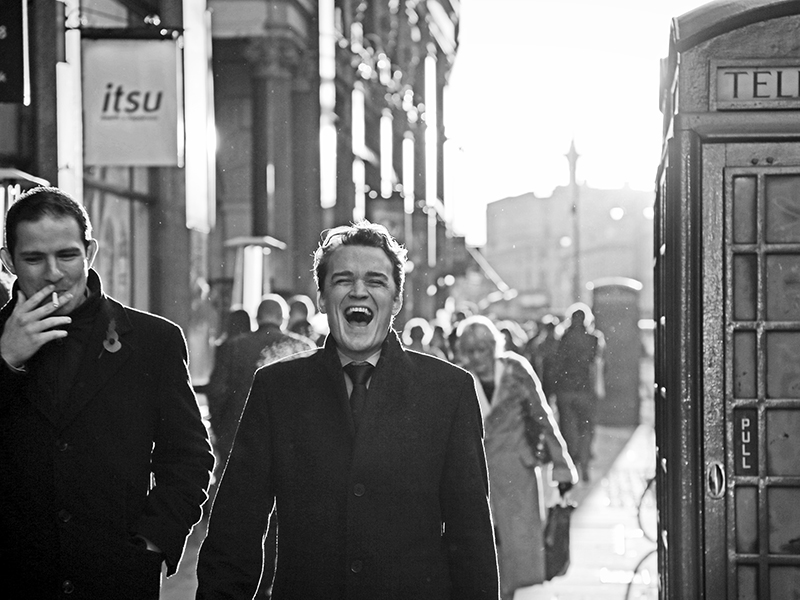
Street photography became a genre in its own right in the early 1930s when technological advancements in handheld cameras made them easily transportable, more user-friendly, and appropriately discreet. The compact Leica, with its superior lens quality, became the camera of choice for many of history’s street photography masters such as Cartier-Bresson, Elliott Erwitt, Robert Frank, Ilse Bing, and Garry Winogrand, helping them elevate their work into an art form.
Street photography allows me as the photographer to record and share the mystery of life—Ronya Galka
“When street photography matured during the early- to mid-20th century, it stood out from earlier photographic practices in that the images were no longer staged and no longer printed using painterly techniques in order to justify their status as fine art,” explains Rebecca Jones, Junior Specialist, Photographs at Christie’s New York. “The candid nature of street photographs, and the speed of their making, is very much a part of the modern art movement of photography,” she adds.
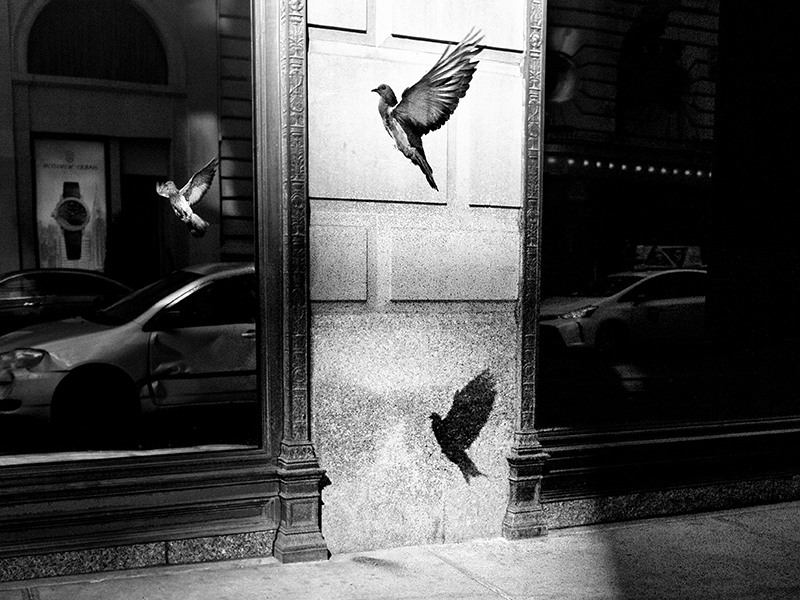
For Jones, street photography is “the artistic practice of reflexively composing images in the camera,” while embedded in a particular locale in order to capture its character. “Skilled street photography will result in precise compositions, in which every element of form and expression is integral, and nothing is superfluous,” she says. “Street photography demands vision, discipline, technique, and an ability to translate a message to a viewer. These are all hallmark aspects of most art forms,” remarks Alan Schaller, a London-based photographer who in 2015 cofounded the Street Photography International collective to promote the best of the genre from around the world, notably via its Instagram account, which now has some 970,000 followers.
While street photography is often associated with documentary photography, and both capture candid moments, the two genres are actually quite different, as New York-based Matthew Pillsbury explains: “With street photography you are telling a story… making a fiction out of elements found in the real world. Documentary photography should have an obligation to be more accurate in the way it presents itself. It’s meant to be a reporting of the real.”
“Street photography allows me as the photographer to record and share the mystery of life, the unexpected side of reality that is constantly taking me by surprise,” says Galka, adding that she shoots with her heart, following her instincts. “For me the act of photographing in the street is a highly subjective process. I don’t necessarily show things as they are but how I see them. It’s that ambiguity that makes this genre of photography so interesting and artful.” Good instincts and chance play an important role in the art form. “In the age of cell phones, people don’t seem to look at their surroundings anymore. Yet, humor, poetry, coincidences are all over, for the ones who look for them,” remarks Yanidel, pointing out that chance is also directly correlated with time spent hunting in the streets.
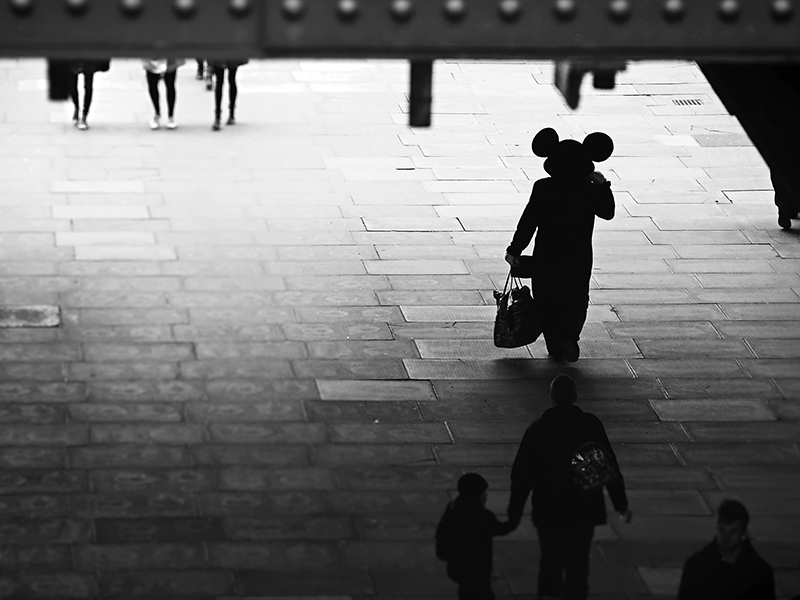
“Chance is always an element, but I rarely depend entirely on it,” adds Schaller. “Sometimes a moment will just materialize, but I find the technique is in understanding the potential of a scene and what realistically can happen. Having a goal when shooting a scene helps me know when it has been achieved or not. It’s good to have an idea of what you want, but you shouldn’t be blinkered.”
While Schaller and Galka shoot in black and white—“black and white allows photographers to strip away any distractions and focus the viewers’ eyes on what they want them to see,” remarks Galka—others play on color to channel certain moods in their visual storytelling. Liam Wong uses a neon-noir cyberpunk aesthetic, inspired by the cinematographic work of Wong Kar-wai, Gaspar Noé, and Ridley Scott, to immortalize Tokyo nightlife. “I like to capture real moments and turn them into the surreal,” the photographer explains, adding that he tends to focus on architecture and silhouettes, not faces.
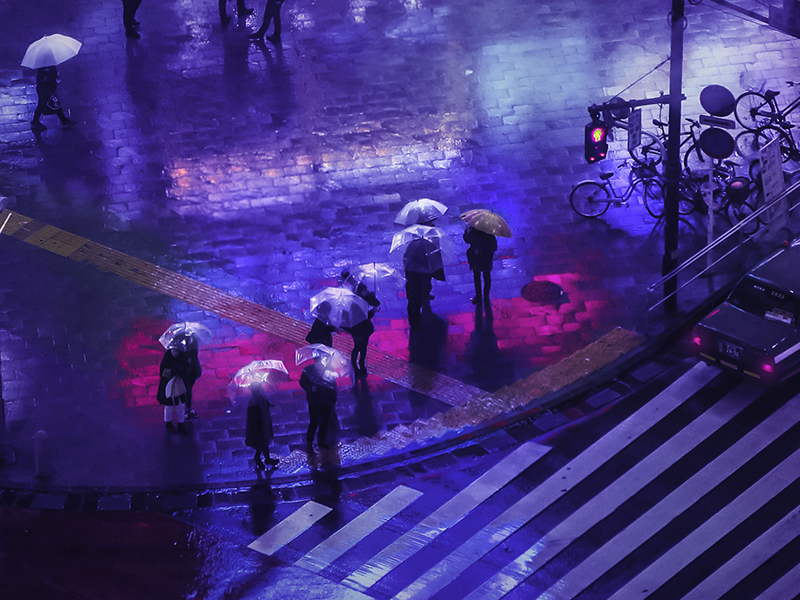
“I love how graphic principles, color, content, and composition all play their part in creating a mood. In some cases I barely edit the image, often shooting with a cooler white balance. Other times I will completely change the colors to create the mood I am going for,” he explains. And though he does love spontaneous street photography, Wong also plans his shoots: “I will often mark interesting locations on a map to return to them at a later date. Sometimes I will lock on a location and wait for something interesting to present itself.
“I usually have a clear idea of the image I wish to create as I am taking the picture. As I’m naturally drawn towards composition, it gives me clear rules as to where I can position myself to get the right shot,” he explains. Wong’s debut monograph TO:KY:OO is about to be published by Thames & Hudson. Pillsbury’s distinctive work, defined by long exposures of anywhere from 20 seconds to an hour, underlines that street photography today extends behind the handheld camera. “In using longer exposures I hope to make viewers look at our world with a renewed sense of discovery.
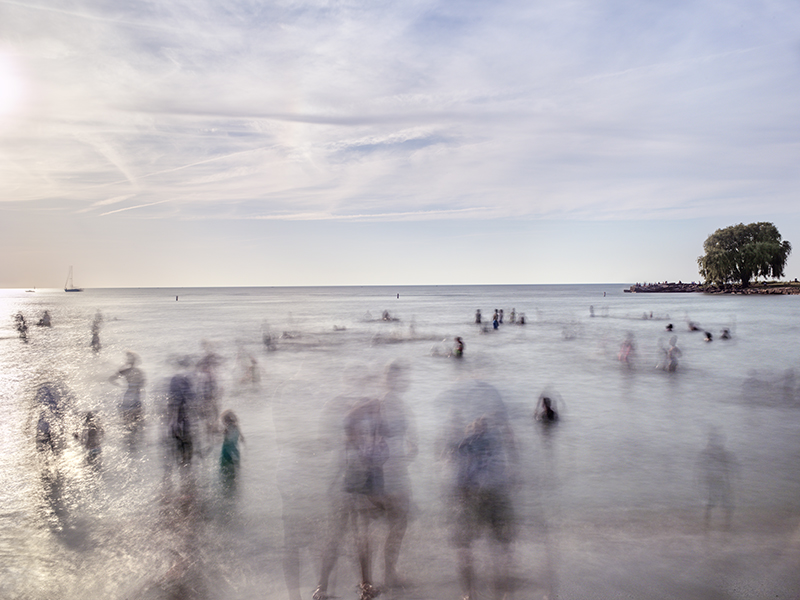
I invite people to think about the evanescent or transient nature of our existence and how we make use of the spaces we occupy. I love this idea of the city providing us these stages upon which the dramas of our lives take place,” he remarks. In recent years, image-sharing sites such as Instagram, Flickr, and Tumblr have increased interest in street photography. “By its very nature, street photography represents one of the most democratic art forms of the photography genres,” says Galka. “And with the advent of affordable cameras and smartphones, more people are capturing the life around them. For many people, street photography provides an entry point into photography overall, then often flows into other genres such as portrait, documentary, and travel.”
The market for street photography is booming. At auction, images by Cartier-Bresson can expect to achieve $10,000–$30,000, Jones says, adding: “The same is generally true of Robert Frank, though the market prefers the more rare, vintage photographs, which can achieve more than $100,000. The record for one of Frank’s photographs is $663,750, achieved for Trolley, New Orleans, 1955 at Christie’s New York in 2013.”
I like to capture real moments and turn them into the surreal—Liam Wong
Works by Diane Arbus can also achieve high figures (in 2018, Identical Twins, Roselle, N.J., 1966 sold for $732,500 at Christie’s New York), while dye-transfer prints by William Eggleston also have the potential to exceed $300,000, Jones remarks. And it’s not just the big names attracting the interest of collectors. As Jones observes: “There is notable enthusiasm for the younger generation of photographers practicing street photography, or offshoots from this classic genre.”